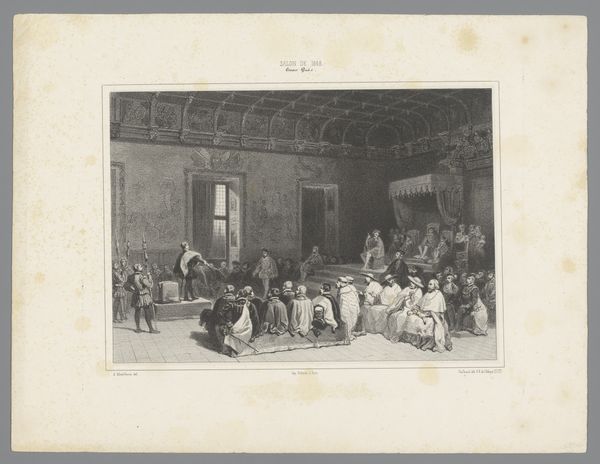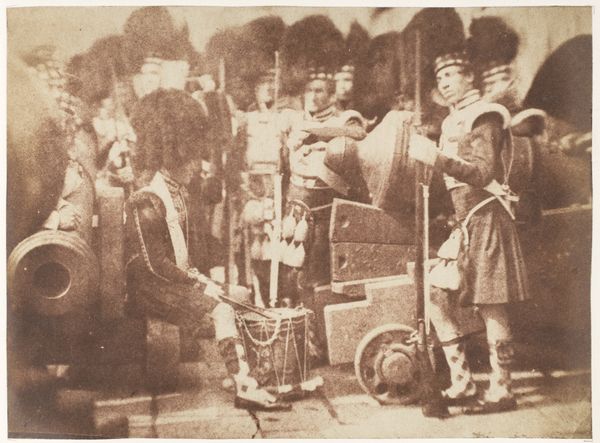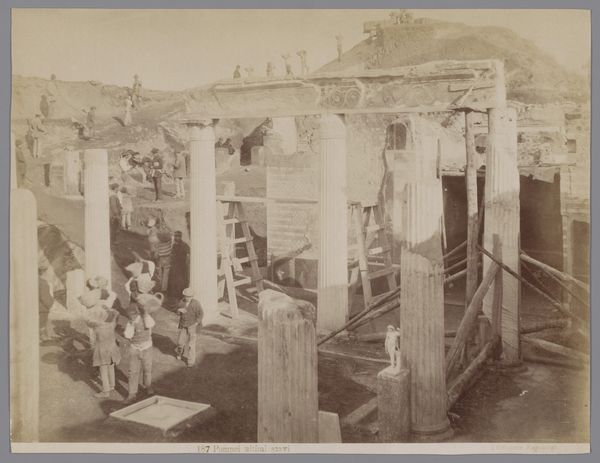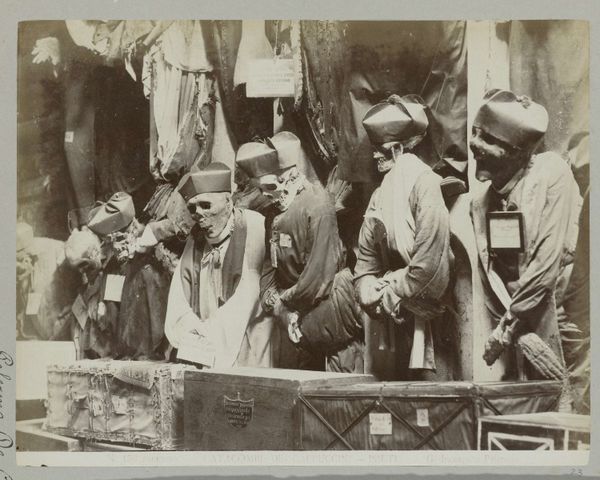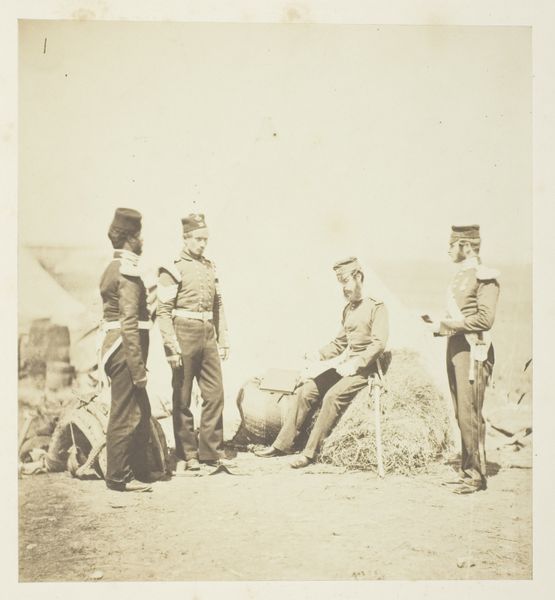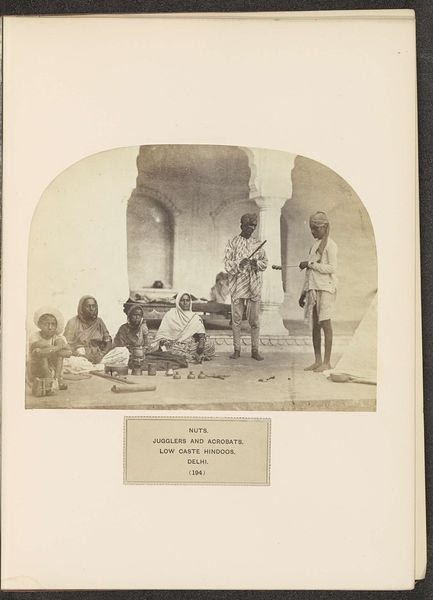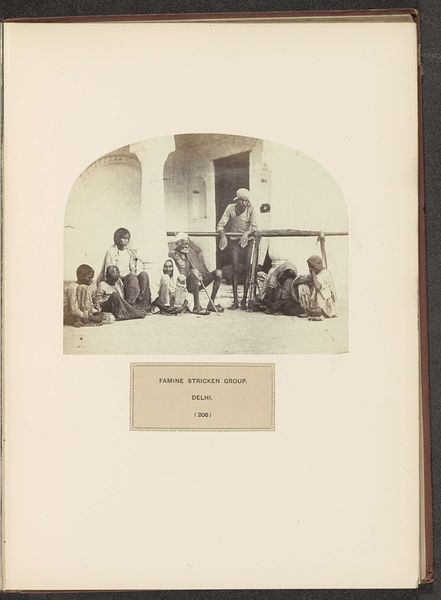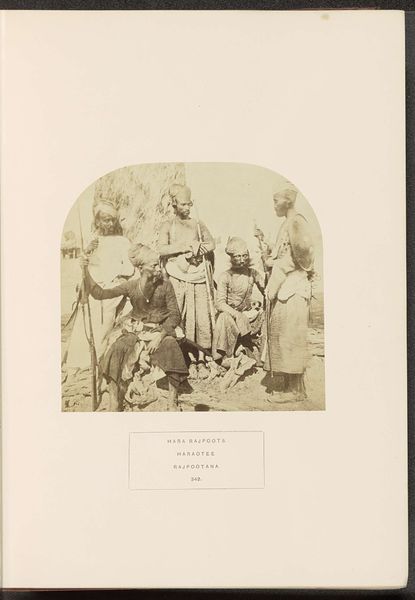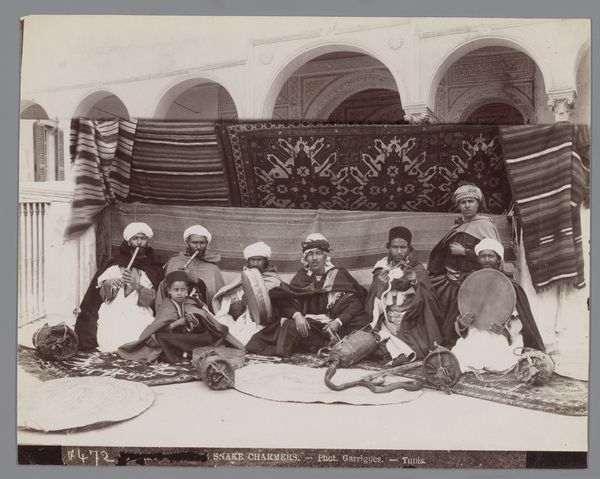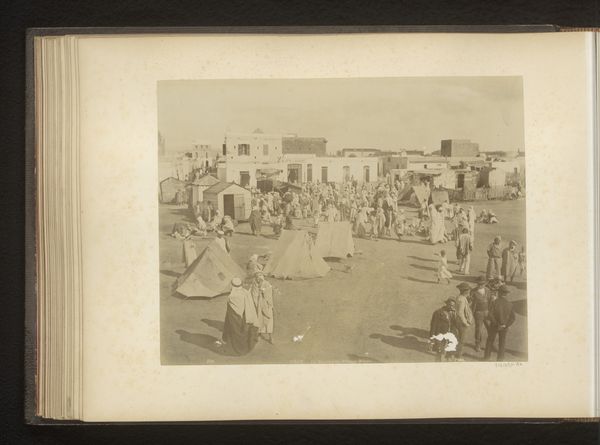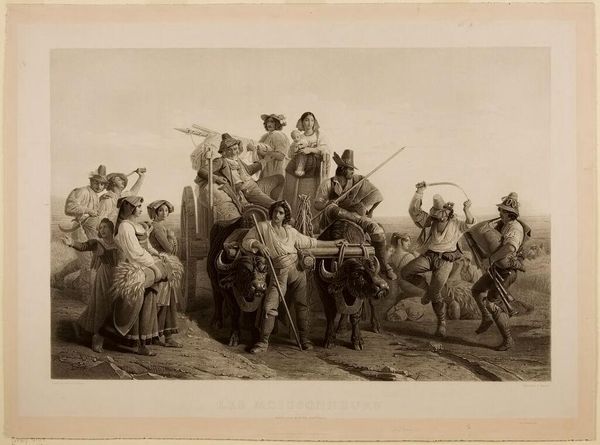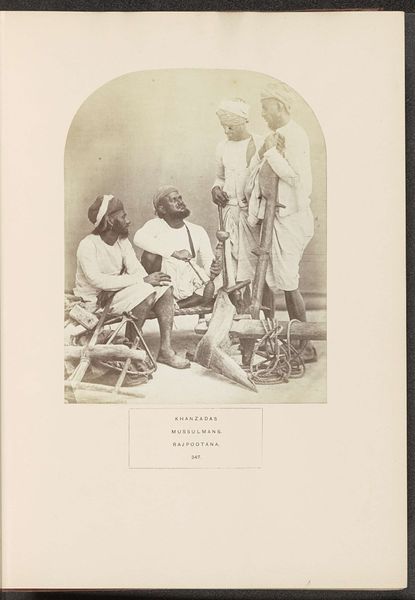
performance, photography
#
portrait
#
religious cultural
#
performance
#
asian-art
#
indigenism
#
photography
#
19th century
Dimensions: height 157 mm, width 218 mm
Copyright: Rijks Museum: Open Domain
Editor: So, this photograph, "Toneelspel door Javanen in kostuum," taken sometime between 1867 and 1910 by Kassian Céphas, shows a staged performance by Javanese people in costume. There's almost a dreamlike quality to it, partially because of the sepia tones, but also because of the formal presentation of something that, I assume, was a living tradition. What do you see when you look at it? Curator: It's interesting to consider this image as a visual record created during a period of intense colonial activity in Java. Céphas, as a Javanese photographer, occupied a unique position. He documented Javanese culture for both local and European audiences. Does this strike you as a purely objective record of a theatrical performance, or something more complex? Editor: I wouldn’t say it feels purely objective. It almost feels staged *for* the camera, or perhaps even for a European audience. Curator: Precisely. The very act of photographing the performance freezes a moment in time and inevitably influences how that moment is perceived. The choice of composition, the subjects' postures—all are choices that speak to a negotiation between Javanese cultural expression and the Western gaze. To what extent do you think photographs like this served to exoticize Javanese culture, and to what extent might they have acted as a form of cultural preservation or even resistance? Editor: That's a powerful point. I hadn’t considered it as a form of resistance, but I guess documentation can be an assertion of identity. Looking at this now, I wonder about Céphas’s own intentions. Curator: The intent behind such photographs can be complex and multifaceted. He was likely working within a colonial context but could also be preserving elements of Javanese culture that might have otherwise been lost or misrepresented. Editor: This makes me see how even a seemingly simple photograph can be read as a negotiation of power and representation. It's fascinating to think about how the camera itself can be a tool for both colonialism and cultural survival. Curator: Indeed. And it reminds us that every image has a history, deeply embedded within its social and political context.
Comments
No comments
Be the first to comment and join the conversation on the ultimate creative platform.
